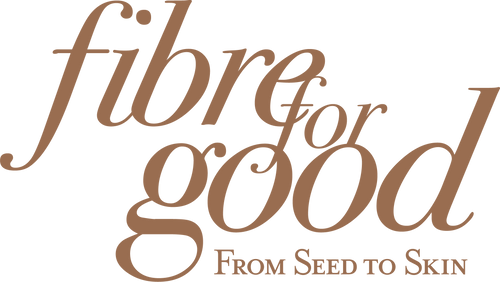When it comes to babywear, the word “natural” is everywhere. But what does it really mean?
Most baby clothes on the market are made from conventionally grown cotton — and while cotton sounds safe, the reality is very different. This crop is one of the most chemically intensive in the world, treated with heavy pesticides, synthetic dyes, and bleaching agents. These toxins don’t disappear during manufacturing. They cling to the fibres, ending up in the garments that touch your baby’s skin day and night.
For a newborn, that’s a serious problem. A baby’s skin is thinner, more absorbent, and far more sensitive than an adult’s. Their immune system is still developing. And they spend most of their time in contact with fabric, from swaddles to sleepsuits.
What They Wear Matters
That’s why at Fibre for Good, we do things differently.
Our babywear is designed to do one thing above all: protect their precious skin.
- No dyes
- No bleaches
- No synthetic softeners
- Just cotton, grown in colours gifted by nature — soft browns, greens, and creams
We don’t chase trends. We don’t do fussy fast fashion. Our garments are simple, natural, and gender neutral, designed to last and be passed on. Soft, breathable, biodegradable, and made with nothing to hide: this is babywear as it should be.

Organic Isn’t Always Equal: GOTS vs ONCC
You might already be familiar with GOTS-certified organic cotton (Global Organic Textile Standard) — and it’s definitely a better step than conventional cotton. But here’s what most people don’t know:
Even GOTS-certified garments can still go through:
- Bleaching (usually with oxygen-based agents)
- Dyeing (with synthetic, petroleum-derived dyes)
- Finishing (with “approved” chemical softeners or treatments)
In short: the cotton may be organic, but the final product still undergoes chemical processing to meet commercial expectations for look and feel.
In contrast, our cotton is something different:
Organic Natural Colour Cotton (ONCC) — only found in brands like Fibre for Good.
|
Feature |
GOTS Certified Organic Cotton |
Organic Natural Colour Cotton (Fibre for Good) |
|
Origin |
Organically farmed cotton |
Regeneratively farmed, naturally coloured cotton |
|
Colour |
Typically dyed or bleached white |
Grown in natural brown, green, and cream shades |
|
Bleaching |
Allowed (oxygen-based) |
None |
|
Dyeing |
Synthetic “low-impact” dyes |
None — colour is natural |
|
Chemical Finishes |
Approved softeners allowed |
Minimal or none required |
What is regenerative farming?
It’s a farming method that doesn’t just take from the earth — it gives back. Regenerative practices focus on rebuilding soil health, increasing biodiversity, and restoring ecosystems. That means every Fibre for Good garment starts with cotton grown in a way that heals the land, rather than depleting it.
This is the lowest-impact cotton on the planet — with no need for synthetic dyes, less processing, and up to 90% less water used compared to conventional cotton.
It’s better for your baby. It’s better for the soil. And it’s better for the farmers who grow it.

A Legacy Worth Leaving
When we talk about sustainability, we’re really talking about legacy.
What kind of world are we dressing our children for? One where rivers run blue from dye factories and farmland is degraded, or one where clothes are safe, soil is protected, and choices support a better system?
Sustainable babywear isn’t about being trendy. It’s about being intentional — from the soil to the skin.
And when you choose Fibre for Good, you’re not just dressing your baby. You’re investing in something cleaner, safer, and genuinely better — for them, and for the planet they’ll inherit.
👉 Shop organic babywear that protects our future

